
There is a lot of confusion about whether or not to get the coronavirus vaccine when it becomes available because it’s being rushed for political purposes. But I just read that whenever you do get a flu or COVID-19 shot, getting a good night’s sleep will increase its effectiveness. Good to know.
If you are sleep deprived during the week before you get a flu shot, you might get less than 50% of the normal antibody response than if you were well rested. That means that the flu shot might be ineffective.
We all know that sleep strengthens our immune systems. When we’re tired and run down, our bodies work overtime to repair and restore themselves on a cellular level while we sleep. People who sleep less than 7 hours per night are 3 times more likely to get sick with the common cold. Those who sleep less than 5 hours per night are 70% more likely to get pneumonia.
We should be sleeping between 7-10 hours per night. This can ward off depression and high blood pressure, and it’s linked to higher risk of dementia, diabetes, and cardiovascular disease.
So rest up before you get your flu shot this season!

There is a lot of confusion about whether or not to get the coronavirus vaccine when it becomes available because it’s being rushed for political purposes. But I just read that whenever you do get a flu or COVID-19 shot, getting a good night’s sleep will increase its effectiveness. Good to know.
If you are sleep deprived during the week before you get a flu shot, you might get less than 50% of the normal antibody response than if you were well rested. That means that the flu shot might be ineffective.
We all know that sleep strengthens our immune systems. When we’re tired and run down, our bodies work overtime to repair and restore themselves on a cellular level while we sleep. People who sleep less than 7 hours per night are 3 times more likely to get sick with the common cold. Those who sleep less than 5 hours per night are 70% more likely to get pneumonia.
We should be sleeping between 7-10 hours per night. This can ward off depression and high blood pressure, and it’s linked to higher risk of dementia, diabetes, and cardiovascular disease.
So rest up before you get your flu shot this season!

As a college advisor, I help students find their future niches. I love this part of my job – brainstorming and discussing career options to help them make good choices that will be satisfying and lucrative. But, over the past decade I’ve been hearing from students who would love to become teachers that they won’t go into teaching because they worry that they won’t be able to make enough money to support themselves. GASP!
What does this say about our society that one of the most important positions – TEACHING OUR CHILDREN – pays so little that our best candidates pursue careers in other fields? This means that the best candidates don’t end up teaching in classrooms across America. Why is this a tragedy? We need our teachers to inspire our children to learn. When teachers are paid so little that they often need second jobs to pay their bills, they’re going to leave the profession or they won’t enter it at all.
Schools are scrambling to find math and science teachers because they’re going into STEM (science, technology, engineering, and math) careers. I see teachers in classrooms attempting to teach classes without the necessary degrees or credentials to do a good job. Many PE teachers end up teaching math classes because anyone who can teach math can get better paying jobs in just about any other career.
Low-income (high poverty) schools are hit the hardest with teacher shortages. The best teachers are recruited by higher-income schools because they can offer more support, safer working conditions, and better selection of the courses they will teach.
We need to support our schools, pay our teachers a livable wage, and give them the benefits they so deserve. And while this pandemic is temporary, it just adds another layer of reasons why many potential teachers choose different paths. How can we expect our children to be prepared to function in society and to go on to higher education if they don’t receive the solid foundation they need in K-12 classrooms. Take flowers, give treats, and help support your children’s teachers.

Our president just signed an Executive Order (EO) that claims that ANTI-RACISM is the real racism. Huh? Knowing that we’re all distracted and overwhelmed by the onslaught of headline news, Trump just signed an order that has stopped ethnic and diversity training in government agencies, and diversity and ethnic studies programs in colleges that rely on federal funding.
I read the entire Executive Order 13950 because everyone seems confused by what at first blush seemed like a positive plan to stop offensive and anti-American race and sex stereotyping and scapegoating. I had to reread it because he often contradicted his statements in the same sentences!
Many colleges have suspended classes and programs that teach diversity to embrace our differences. Local, state and federal agencies have stopped requiring anti-racism trainings. Military and federal contractors have been banned from conducting diversity training. Why? They all need federal funds and can’t afford to lose them by violating this EO.
This EO is filled with double talk. It claims that anti-racism and anti-sexism efforts are the real examples of racism and sexism. Trump admitted that the goal of the EO is to prevent WHITE MEN from getting hurt by these diversity training sessions that cause them to feel discomfort, guilt, and anguish because of their race or sex. Seriously? He recently tweeted, “Sorry liberals! How to be Anti-White 101 is permanently cancelled!”
Concepts such as “critical race theory” and “white privilege” are now prohibited from being discussed in federal instruction programs. The order prohibits unconscious or implicit bias training, and is “prohibited to the extent it teaches or implies that an individual, by virtue of his or her race, sex and/or national origin, is racist, sexist, oppressive or biased, whether consciously or unconsciously.”
With a simple signature, our president just suspended training programs and ethnic awareness courses that we have spent decades establishing to stop discrimination in schools, workplaces, and government agencies. What’s most appalling about this is that he framed this EO to make it appear to prevent racism. Read between the lines and vote so your voice is heard.
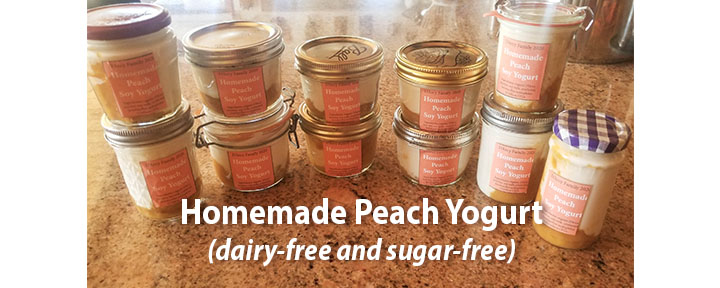
Finding food to eat when I’m a pescatarian who doesn’t eat dairy or sugar/honey is challenging. Health food stores have plenty of dairy free items but they’re loaded with sugar or honey. When I do find sugar-free food, they have dairy or they’re too heavy on carbs. Oy vey!
So I just made my first dairy-free yogurt with zero sugar. It’s made with organic soy milk. I use my raspberries to flavor it and sweeten the batch with erythritol (zero calories and great for oral health and blood sugar). I’ve also made fresh peach sauce and dark chocolate to have a range of flavors.
Finally, I have delicious yogurt that is dairy free and sugar free. It takes just 5 minutes to prepare and 15 hours in a slow cooker. Best part: it costs about 50 cents per serving!

There’s something comforting in growing herbs. I just 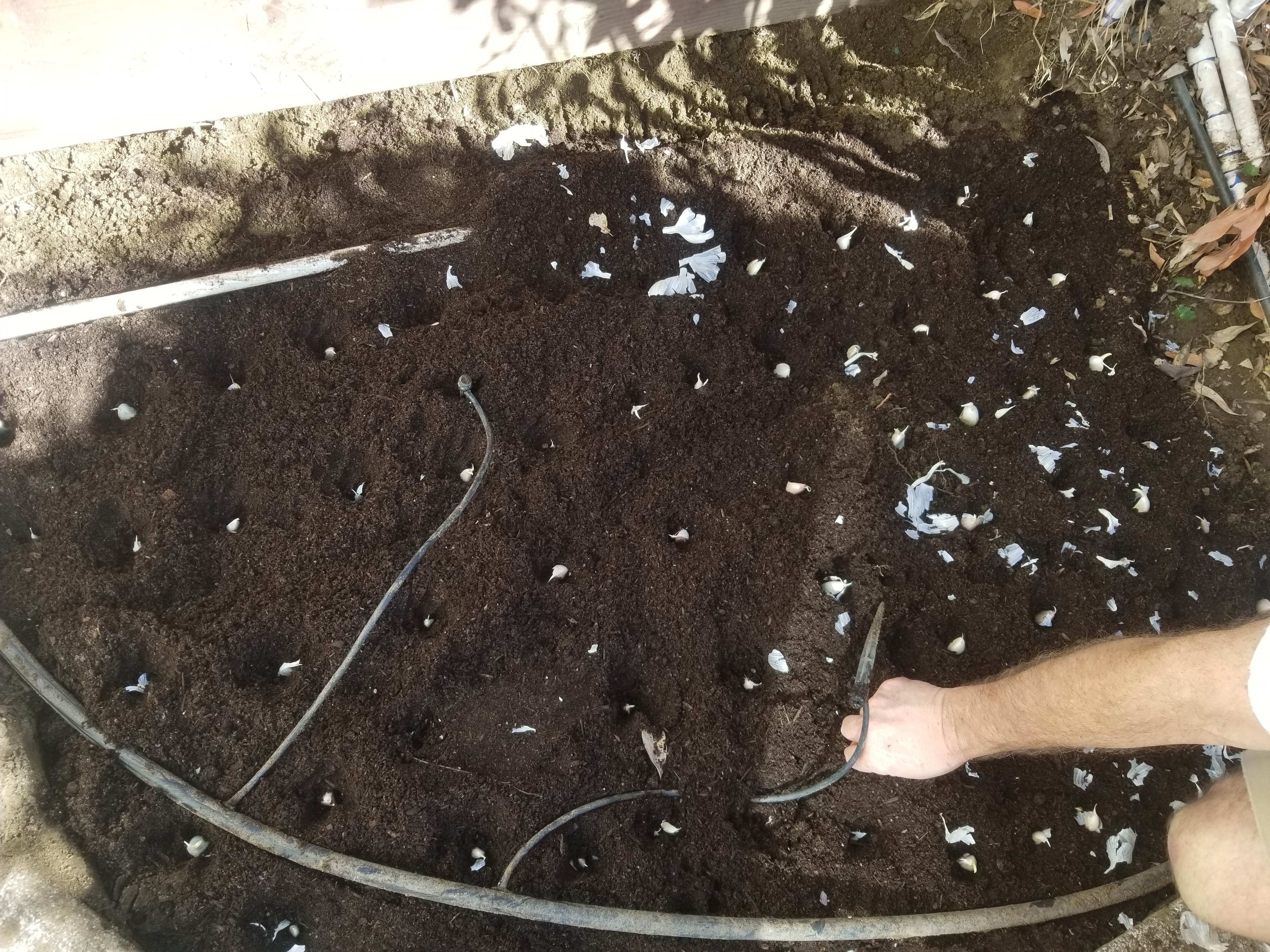 planted 60 garlic cloves last week and they’re already sprouting. I plan to plant again in spring so I have enough to last me all year.
planted 60 garlic cloves last week and they’re already sprouting. I plan to plant again in spring so I have enough to last me all year.
Just planted spicy pepper seeds using a kit. Normally I buy plants in 4” pots, but I got this for my birthday so I’m trying it out for the first time. I’ve planted jalapeno, cayenne, habernero, and anaheim peppers. By growing them in my kitchen, theoretically I can grow them year round. Hope to have so many peppers that I can dry and store them.
My mo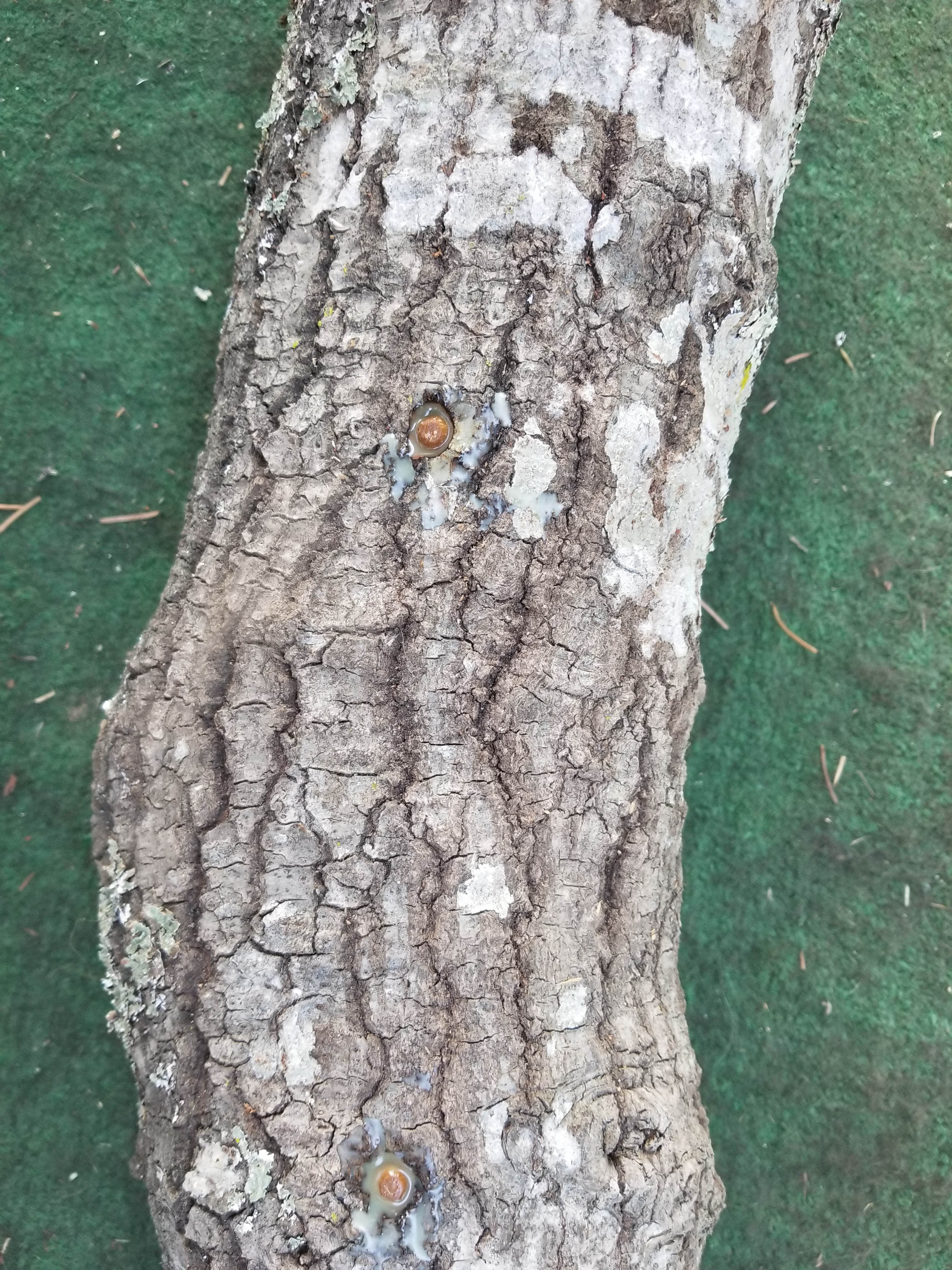 st interesting “herb” is my shiitake mushroom project. It’s actually a fungus but I’m keeping it in my herb garden. I cut 2 large oak limbs during my fire prevention clearing and let them sit for 2 weeks. Then I drilled holes in the logs and placed shiitake plugs in each of them. I poured hot wax over all of the plugs and the ends of the logs to seal them in. Now it’s a waiting game. I should start seeing mushrooms in 3-6 months, and they’ll continue to produce for 3-7 years.
st interesting “herb” is my shiitake mushroom project. It’s actually a fungus but I’m keeping it in my herb garden. I cut 2 large oak limbs during my fire prevention clearing and let them sit for 2 weeks. Then I drilled holes in the logs and placed shiitake plugs in each of them. I poured hot wax over all of the plugs and the ends of the logs to seal them in. Now it’s a waiting game. I should start seeing mushrooms in 3-6 months, and they’ll continue to produce for 3-7 years.
My herb garden has rosemary, thyme, oregano, basil, and mint growing year round. I keep adding new herbs like lemon grass, chives, and onions. Not all take, but it’s fascinating to experiment, and even more fun to harvest!
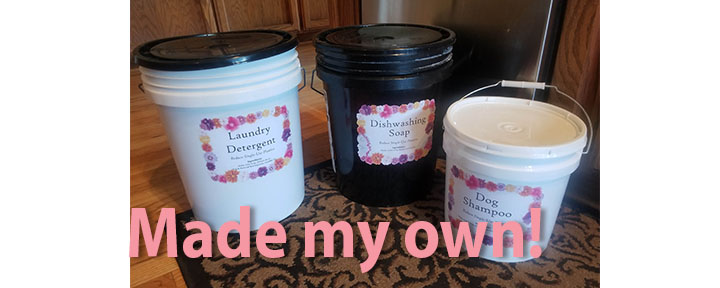
Most people know me as the “planner,” the person to host parties and events – the person who controls things. The series of events that have bombarded us since March has made me rethink my priorities and what’s important to me. I’ve stopped assuming that I can do things like running errands, planning parties, having my house cleaned, and seeing family and friends.
When there was a run on toilet paper, meats, and sanitizing wipes, I didn’t start hoarding items. I just thought about how I could simplify my life. I had become so accustomed to buying household things at big-box retail stores and was convinced that there were certain brands I just “needed” to buy. So I went online to see how to make these household items that were backordered and ridiculously expensive.
Last weekend, I made a year’s supply of laundry detergent, dishwashing soap, and even dog shampoo. Making the soaps were fun and rewarding. I made 5 gallons of each and it took me just a few hours and few dollars. The best part: I don’t have to worry about shopping or having to do without should there be a run on soaps or a bottleneck in the supply chain.
I’ve also made reusable sanitizing wipes, cloth napkins, reusable Swiffer pads, and cloth towels (no paper towels). I’m growing my own herbs, veggies, and fruit – and raising hens to get a half dozen eggs per day. I like producing the things I need and reducing my need to buy things. Besides, I like to know that my food has no GMOs and pesticides and that I am not supporting corporations that destroy our ecosystem and our future way of life.

If ever we were to thank teachers for their service, it’s today in 2020. Teachers and professors have been shaken from their posts as educators this year during the worst pandemic of our lifetimes. With just a few days warning, they all switched from in-person classes to some sort of online platform. With zero training, they scrambled to learn how to use online software, transform their regular classes to Zoom or Meet, and support students who couldn’t connect online. With no definitive end date for online teaching, they prepped, taught, graded, and supported. Many did all of this while managing their own children and their educational and emotional needs.
Let’s remember that teachers go into this career field because they love kids and they enjoy teaching. They certainly don’t do it for the money. Hah! It’s a thankless job. Consider what a teacher faces every day:
1. Students who don’t do their homework, which sets back the class.
2. Parents who complain about a grade their child received on a test or report card.
3. Administrators that require that curriculum is covered.
4. Students who use cell phones to text or use social media during class.
5. More administrators who pressure teachers to teach to standardized tests (for scores).
6. Lack of materials to teach their classes so they use personal money to buy necessary supplies.
During this pandemic, I know teachers who drive to students’ homes to deliver paper assignments and books because the students don’t have high-speed internet or computers. I’ve seen teachers drive by students’ homes just to wave so they don’t feel alone. Many teachers have to create 2 lesson plans: (1) for online students; and (2) for students who don’t have internet or computers. Many are doing twice as much work as a result. Teachers are heroes in my book.
Against science and medical advice, many schools and colleges have opened on campus this fall. Besides putting the students at risk of getting COVID-19, teachers and professors are more at risk of getting and dying from COVID-19. With their low salaries, they’re probably not in a position to choose to quit because they fear for their health. TEACHERS ARE FRONTLINE WORKERS.
So today, let’s celebrate all of the teachers! Give them cards and tell them why you appreciate them. Give them gift cards so they feel appreciated. Remember, they are preparing our future generations to lead the world.
Thank you to all teachers!

Gov. Newsom (Calif) vetoed the bill that would require all California high school students to take a one-semester ethnic studies course to graduate. WHAT? This important course was supposed to formally introduce the history and culture of various major ethnicities to students before they become adults. The mandate would have started in 2024-2025 had Newsom signed it. Ugh.
So why did Newsom veto the bill? He caved to a few ethnic groups who pressured him to not sign it because they were not included in the model curriculum plan. This will create a huge setback because the next draft of this bill will not take place until 2029-2030! TEN YEARS? When our youth struggle to understand white supremacists, Black Lives Matter, the “China Hoax,” the Muslim ban, and immigration policies, learning about the cultures, religions, and history can reduce fear and stereotypes.
A one-semester class will not be able include every ethnic group, but it is a good first step. The bill included African Americans, Latinos, Native Americans, and Asian American/Pacific Islanders. The Jews, Armenians, and Muslims were the biggest critics of the bill. Japanese Americans were also excluded under the Asian American portion of the curriculum.
With Newsom’s veto, all ethnic groups will NOT BE REPRESENTED for 10 Years! Careful what you wish for…
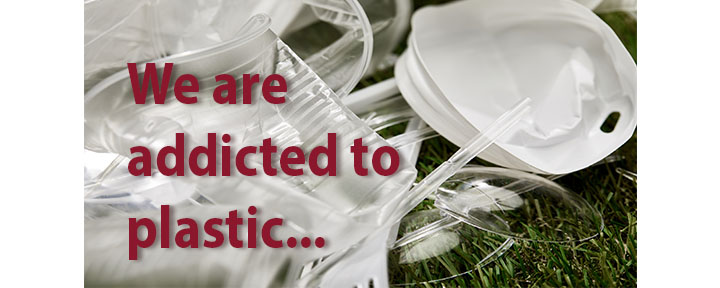
I remember my surprise when I first learned that we were sending our plastic waste to China. I wondered why they would take our waste and poison their own people with their midnight burns. Then when China refused to take our waste for political reasons, our plastic waste was diverted to Malaysia. And today, our chemical industry lobbyists are pushing Kenya to take our plastic waste. This is obscene. Why should other countries have to take our plastic waste?
Last year, we shipped more than ONE BILLION POUNDS of PLASTIC WASTE to other countries. 180 countries around the world process our plastic waste because the petroleum and chemical industry has made us addicted to single-use plastics.
Everything from shampoo bottles to take-out containers to food packaging to product packaging is wrapped in plastic. We need to demand that manufacturing companies stop using single-use plastic. Only then will they use glass, aluminum, steel, or other materials that can be reused.
Here are some easy things you can do to reduce the amount of single-use plastic you consume:
1. Use your own take-out containers
When I eat out, I bring my glass Tupperware containers and fill them with leftovers at the end of my meal. One server actually gave me a 10% discount for bringing my own containers, and another server was so thrilled to see them that she walked around the restaurant to show other diners! I keep about 10 containers in my trunk so I always have them when I need them. It gives me time to wash them and remember to put them back in my car.
2. Buy in bulk
I buy most things in 5-gallon containers and then repackage them in my glass containers. I like the way my pantry looks filled with glass containers of all sizes and shapes. I make labels so I remember exactly what is inside and the date it was purchased. I just bought a big freezer to store my seafood, fruit, and nuts. This saves me lots of money and reduces the amount of time I have to shop.
3. Use glass water (drink) bottles
I carry my glass water bottles with me (when I remember), but I’ve been placing 4-5 extra glass drink containers in my trunk so I always have them. When getting drinks at Jamba Juice-type stores, I ask them to fill up my glass containers. If I don’t have my containers with me, I will only buy drinks sold in glass containers. There aren’t many options but I search until I find a glass container – trying to support those companies that sell drinks in glass. Then, I reuse the glass containers forever. They are perfect to keep in my trunk or to give to friends when they forget theirs!
4. Boycott products sold in single-use plastic
I refuse to buy salads in plastic clamshells. While it is convenient and tempting, I don’t want to support businesses that package food in single-use plastic containers. I just go home and make a salad at a fraction of the cost. When shopping on Amazon.com, I choose products with the least amount of packaging as possible. I especially don’t like giant, thick clamshells that hold a tiny product. It is completely unnecessary and it’s a royal pain to open. Besides, these companies are using giant plastic to make the product appear larger so they can charge more money for the product. It’s a marketing scam that is also an environmental problem.
I made a YouTube video on how to stop using single-use plastics. Check it out.
It’s time to stop using single-use plastic and force manufacturers to provide reusable alternatives. Why should Kenya be pressured to take our plastic waste simply because we’re too lazy and entitled?

You know our country is in turmoil when the youth are agitated enough to vote in an election. 45% of Generation Z (born between 1996-2015) plans to vote in this election compared to 27% last year. Between the coronavirus pandemic and the Black Lives Matter movement, young voters have become politically active.
This is good news for the Dems because 60% of Gen Z voters are Democrats and just 33% are Republicans. Hope! And, young people get their political information from social media (67%) and major news networks (62%).
Colleges should be guiding Gen Z voters to get registered and collect the information and documents they need to vote in November because this will be the first time many college students vote. The youth may just be what the Dems need to replace the current administration in the White House.
